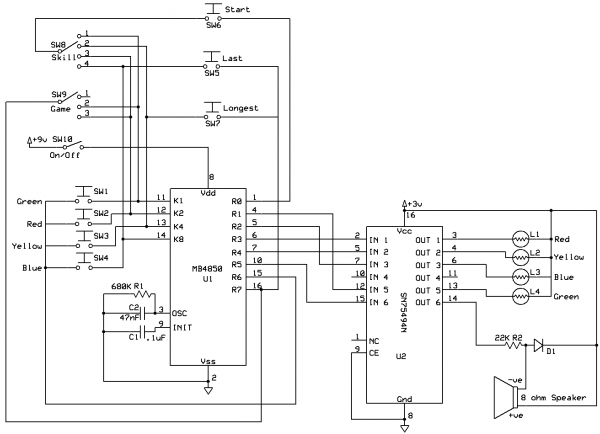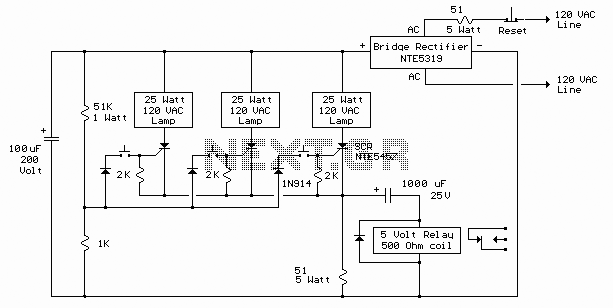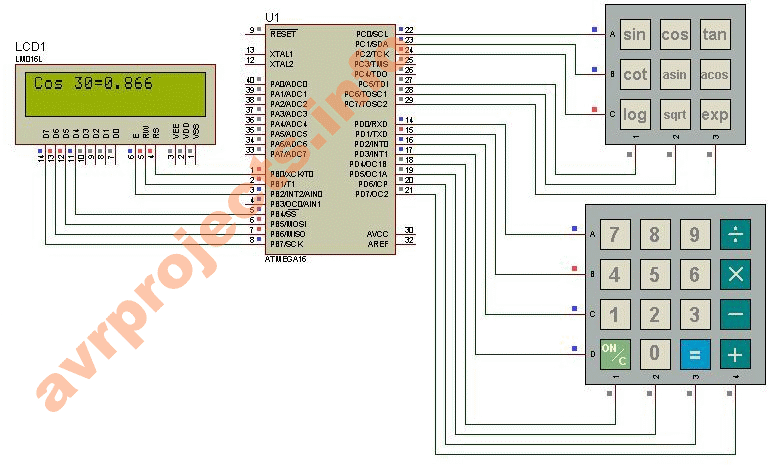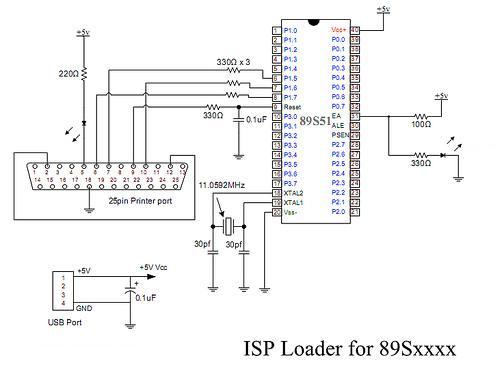
AVR TV Game

Martin Ustek has modified the project to include a Sokoban game. Information about his version can be found throughout this page; for full details, please visit his website (Czech). Either game can be selected with a menu that appears when the circuit is powered on. Tetris was developed first and does not display this menu in the following video.
The project described involves a microcontroller-based circuit designed to run two classic games: Tetris and Sokoban. The circuit features a user interface that allows for game selection via a simple menu that appears upon powering the device. This menu is a critical addition to the original design, which initially only supported Tetris. The implementation of the Sokoban game requires additional memory and possibly enhanced processing capabilities to manage the game's logic and graphics.
The circuit likely utilizes a microcontroller such as an Atmega series or similar, which is programmed to handle the game logic, input processing, and output display. The user interface may consist of a small LCD or LED display to show game status and the menu options. Input is typically managed through a set of buttons or a joystick, allowing the user to navigate the menu and play the selected game.
The Tetris game, being the original offering, may rely on simpler graphics and logic, while the Sokoban game introduces more complex mechanics involving puzzle-solving and character movement across a grid. The circuit's design must ensure that the transition between games is seamless, allowing for quick switching without requiring a reset or power cycle.
In terms of power supply, the circuit is likely designed to operate on low voltage, possibly powered by batteries or a USB connection. The design should include appropriate voltage regulators to ensure stable operation. Additionally, the circuit may incorporate sound output capabilities for game effects, enhancing the user experience.
Overall, this project exemplifies the integration of classic gaming into a compact and efficient electronic design, showcasing the versatility of microcontroller applications in entertainment technology.Martin ustek has modified the project to also include a Sokoban game. Some information about his version can be found dotted throughout this page; for full details, please visit his website (Czech). Either game can be selected with a menu that appears when you power up the circuit. Tetris was developed first, and so doesn`t show this menu in the f ollowing video. 🔗 External reference
The project described involves a microcontroller-based circuit designed to run two classic games: Tetris and Sokoban. The circuit features a user interface that allows for game selection via a simple menu that appears upon powering the device. This menu is a critical addition to the original design, which initially only supported Tetris. The implementation of the Sokoban game requires additional memory and possibly enhanced processing capabilities to manage the game's logic and graphics.
The circuit likely utilizes a microcontroller such as an Atmega series or similar, which is programmed to handle the game logic, input processing, and output display. The user interface may consist of a small LCD or LED display to show game status and the menu options. Input is typically managed through a set of buttons or a joystick, allowing the user to navigate the menu and play the selected game.
The Tetris game, being the original offering, may rely on simpler graphics and logic, while the Sokoban game introduces more complex mechanics involving puzzle-solving and character movement across a grid. The circuit's design must ensure that the transition between games is seamless, allowing for quick switching without requiring a reset or power cycle.
In terms of power supply, the circuit is likely designed to operate on low voltage, possibly powered by batteries or a USB connection. The design should include appropriate voltage regulators to ensure stable operation. Additionally, the circuit may incorporate sound output capabilities for game effects, enhancing the user experience.
Overall, this project exemplifies the integration of classic gaming into a compact and efficient electronic design, showcasing the versatility of microcontroller applications in entertainment technology.Martin ustek has modified the project to also include a Sokoban game. Some information about his version can be found dotted throughout this page; for full details, please visit his website (Czech). Either game can be selected with a menu that appears when you power up the circuit. Tetris was developed first, and so doesn`t show this menu in the f ollowing video. 🔗 External reference





